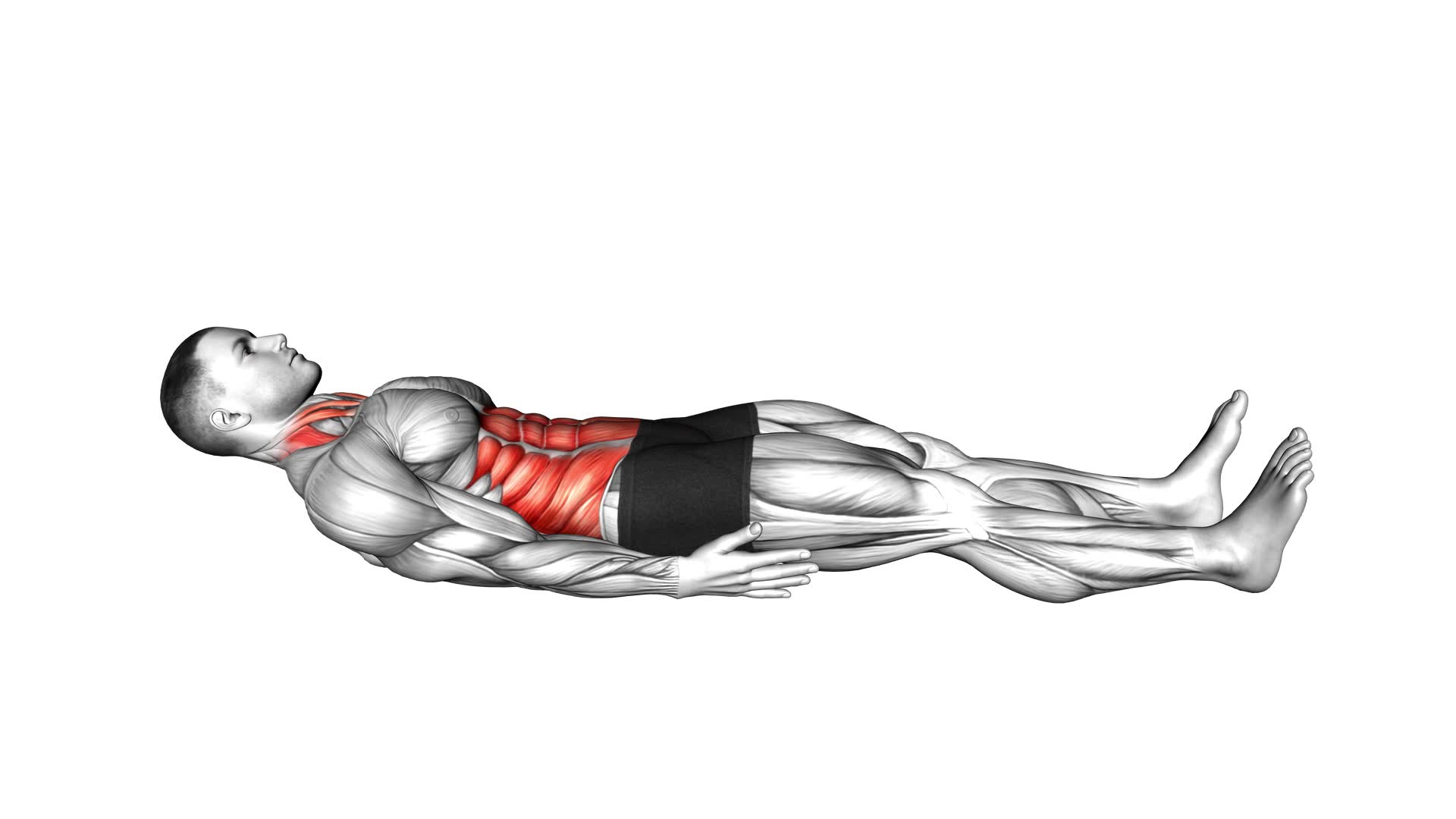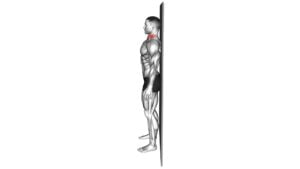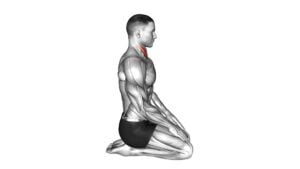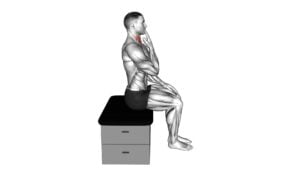Lying Chin Tuck Raise – Video Exercise Guide & Tips

Are you looking for a simple yet effective exercise to strengthen your neck and improve your posture?
Watch This Exercise Video
Look no further than the lying chin tuck raise!
In this video exercise guide, we'll show you the proper form and technique, common mistakes to avoid, variations and progressions, and some tips for a successful workout.
Get ready to enhance your neck strength and posture with this quick and easy exercise.
Let's dive in!
Key Takeaways
- Lying Chin Tuck Raise strengthens neck and upper back muscles.
- It targets the muscles responsible for supporting the neck and maintaining good posture.
- This exercise is essential for overall neck health and can prevent or alleviate neck pain and stiffness.
- Lying Chin Tuck Raise provides better support for the head, reducing strain on the neck and upper back.
Benefits of Lying Chin Tuck Raise
One benefit of the Lying Chin Tuck Raise is that it strengthens your neck and upper back muscles. This exercise specifically targets the muscles in these areas, helping to improve their strength and endurance. By regularly performing the Lying Chin Tuck Raise, you can effectively target and strengthen the muscles responsible for supporting your neck and maintaining good posture.
Neck strengthening is essential for overall neck health and can help prevent or alleviate neck pain and stiffness. Strong neck muscles provide better support for the head, reducing the strain on the neck and upper back. Additionally, by strengthening the upper back muscles, you can improve your posture. The Lying Chin Tuck Raise helps to counteract the effects of slouching and hunching, which can lead to poor posture and various musculoskeletal issues.
Incorporating the Lying Chin Tuck Raise into your exercise routine can have long-lasting benefits for your neck and upper back. By strengthening these muscles, you can improve your posture and reduce the risk of neck pain and stiffness. Remember to perform this exercise with proper form and gradually increase the intensity as your muscles become stronger.
Proper Form and Technique
To perform the Lying Chin Tuck Raise with proper form and technique, follow these guidelines:
- Lie flat on your back on an exercise mat with your knees bent and feet flat on the ground.
- Place your hands palms down on the mat beside your hips, keeping your elbows slightly bent.
- Begin by tucking your chin towards your chest, engaging the muscles in your neck and upper back.
- Slowly lift your head and shoulders off the mat, maintaining the chin tuck position throughout the movement.
- Pause for a moment at the top of the movement, then slowly lower your head and shoulders back down to the starting position.
Common errors to avoid:
- Allowing your chin to jut forward instead of tucking it towards your chest.
- Raising your head and shoulders too high, which can strain the neck muscles.
- Using momentum to lift your upper body instead of relying on the strength of your neck and upper back muscles.
Exercise modifications:
- If you have difficulty maintaining the chin tuck position, start with smaller movements and gradually increase the range of motion as you build strength.
- If you experience neck pain or discomfort, try using a folded towel or small pillow to provide support under your head.
Common Mistakes to Avoid
Avoid these common mistakes when performing the Lying Chin Tuck Raise to ensure proper form and technique.
One common mistake is arching your back instead of keeping it flat on the ground. This can put strain on your lower back and diminish the effectiveness of the exercise. To avoid this, engage your core muscles and consciously press your lower back into the floor throughout the movement.
Another mistake to watch out for is lifting the head too high off the ground. This can strain the neck and lead to discomfort. Instead, focus on tucking your chin towards your chest and lifting your head only a few inches off the ground.
Additionally, be careful not to use momentum to lift your head. This can take away from the targeted muscles and reduce the benefits of the exercise. Instead, focus on using controlled and deliberate movements throughout the entire range of motion.
Variations and Progressions
To further challenge yourself and continue progressing with the Lying Chin Tuck Raise exercise, you can explore different variations and progressions. Here are some advanced modifications and equipment options to consider:
- Weighted Lying Chin Tuck Raise: Hold a dumbbell or medicine ball between your feet while performing the exercise. This adds resistance and requires more strength and stability.
- Swiss Ball Lying Chin Tuck Raise: Place a Swiss ball under your shoulders and upper back. This unstable surface engages your core muscles even more, making the exercise more challenging.
- Single Leg Lying Chin Tuck Raise: Lift one leg off the ground while performing the exercise. This increases the demand on your core and lower body muscles, improving balance and stability.
- Resistance Band Lying Chin Tuck Raise: Attach a resistance band to a stable anchor point behind you and hold the ends of the band in each hand. The band provides added resistance throughout the movement, strengthening your upper body muscles.
When incorporating these variations and progressions, remember to maintain proper form and technique. Start with lighter weights or less resistance and gradually increase as you become more comfortable and stronger. Keep challenging yourself to see continuous improvement in your strength and stability.
Tips for a Successful Workout
To have a successful workout, focus on maintaining proper form and technique while incorporating the variations and progressions discussed in the previous subtopic. Another important aspect of a successful workout is warming up properly.
Before diving into your main exercises, it's crucial to warm up your muscles and increase blood flow. This helps to prevent injuries and prepares your body for the upcoming workout. Incorporate warm up exercises such as jogging in place, jumping jacks, or arm circles to get your heart rate up and loosen up your muscles.
In addition to warming up, effective workout routines are essential for achieving desired results. Plan your workouts in advance, ensuring that you target different muscle groups on different days to allow for proper recovery. Mix up your exercises to prevent boredom and keep challenging your body. Incorporate both strength training and cardiovascular exercises for a well-rounded routine. Remember to listen to your body and make adjustments as needed. If an exercise feels uncomfortable or causes pain, modify it or seek guidance from a fitness professional.
Frequently Asked Questions
How Many Sets and Repetitions Should I Do for the Lying Chin Tuck Raise Exercise?
For the lying chin tuck raise exercise, it's recommended to do 3 sets of 10 to 12 repetitions.
This exercise is great for strengthening your neck and upper back muscles. By tucking your chin and raising your head off the ground, you can improve your posture and reduce neck pain.
It's important to avoid common mistakes such as lifting your shoulders or using momentum to lift your head. Focus on maintaining proper form throughout the exercise.
Can I Perform the Lying Chin Tuck Raise Exercise With Weights or Resistance Bands?
Yes, you can perform the lying chin tuck raise exercise with weights or resistance bands. Adding resistance bands to the chin tuck raise can help to increase the challenge and engage your muscles even more.
Using weights can also provide additional resistance and help to strengthen your neck and upper back muscles. Incorporating these tools into your workout can enhance the benefits of the chin tuck raise and improve your overall strength and posture.
Is the Lying Chin Tuck Raise Exercise Suitable for Beginners or Should I Have Prior Strength Training Experience?
The lying chin tuck raise exercise is suitable for beginners, even without prior strength training experience. It's a great exercise to start building strength in your neck and upper back muscles.
If you're a beginner, you can modify the exercise by using lighter weights or even no weights at all. As you progress and gain more strength, you can gradually increase the resistance or try using resistance bands for added challenge.
Can I Incorporate the Lying Chin Tuck Raise Exercise Into My Daily Routine, or Is It Better to Do It on Specific Workout Days?
You can definitely incorporate the lying chin tuck raise exercise into your daily routine. It doesn't have to be limited to specific workout days. This exercise offers several benefits, such as strengthening your neck and upper back muscles, improving posture, and reducing neck pain.
Additionally, there are variations of this exercise that you can try to target different muscle groups. Adding it to your daily routine can help you maintain overall strength and posture.
Are There Any Alternative Exercises That Target the Same Muscles as the Lying Chin Tuck Raise?
Looking for alternative exercises that target the same muscles as the lying chin tuck raise?
There are a few options you can try.
One is the chin tuck exercise, which focuses on strengthening the neck and upper back muscles.
Another option is the seated row, which targets the upper back and shoulder muscles.
Incorporating the lying chin tuck raise into your daily routine can bring many benefits, such as improved posture and reduced neck and shoulder pain.
Conclusion
The lying chin tuck raise is a beneficial exercise for improving posture and strengthening the neck and upper back muscles. By practicing proper form and technique, avoiding common mistakes, and gradually progressing with variations, you can maximize the benefits of this exercise.
Remember to stay consistent and listen to your body's limitations. With these tips, you can have a successful workout and see improvements in your overall posture and strength.

Author
Years ago, the spark of my life’s passion ignited in my mind the moment I stepped into the local gym for the first time. The inaugural bead of perspiration, the initial endeavor, the very first surge of endorphins, and a sense of pride that washed over me post-workout marked the beginning of my deep-seated interest in strength sports, fitness, and sports nutrition. This very curiosity blossomed rapidly into a profound fascination, propelling me to earn a Master’s degree in Physical Education from the Academy of Physical Education in Krakow, followed by a Sports Manager diploma from the Jagiellonian University. My journey of growth led me to gain more specialized qualifications, such as being a certified personal trainer with a focus on sports dietetics, a lifeguard, and an instructor for wellness and corrective gymnastics. Theoretical knowledge paired seamlessly with practical experience, reinforcing my belief that the transformation of individuals under my guidance was also a reflection of my personal growth. This belief holds true even today. Each day, I strive to push the boundaries and explore new realms. These realms gently elevate me to greater heights. The unique combination of passion for my field and the continuous quest for growth fuels my drive to break new ground.







